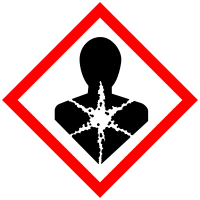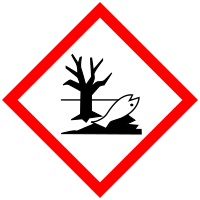
Improving Member States preparedness to face an HNS pollution of the Marine System (HNS-MS)
1,5,9-Cyclododecatriene
Description Top
| CAS number | 4904-61-4 |
| UN number | 2518 |
| Chemical formula | C12H18 |
| Standard European Behaviour Classification (SEBC) | Floater (F) |
GESAMP Hazard profile
| A1 | A2 | B1 | B2 | C1 | C2 | C3 | D1 | D2 | D3 | E1 | E2 | E3 |
| 5 | NR | 4 | NI | 0 | 0 | 1 | 2 | 1 | A | NI | F | 3 |
Marine pollution Classification (MARPOL Annex II)
| Category | Description |
| X | Noxious Liquid Substances which, if discharged into the sea from tank cleaning or deballasting operations, are deemed to present a major hazard to either marine resources or human health and, therefore, justify the prohibition of the discharge into the marine environment. |
Alternate names for this chemical
Cdt
Cyclododeca-1,5,9-Triene
1,5,9-Cyclododecatriene
Cyclododeca-1,5,9-Triene
1,5,9-Cyclododecatriene
Physico-chemical properties Top
| Chemical formula | C12H18 | ||
| Molar mass | 162.271 [g/mol] | ||
| State | Liquid at 25°C and 1 atm | ||
| Fusion temperature | -17 [°C] | ||
| Boiling temperature | 240 [°C] | ||
| Density |
|
||
| Hydrosolubility |
|
||
| Vapour pressure |
|
||
| Flash point (Pensky-Martens closed cup) | 88 [°C] | ||
| Lower explosivity limit (LEL) | 1 [%] | ||
| Upper explosivity limit (UEL) | 4 [%] | ||
| Henry's constant | 2847.2 [mol/(m³·Pa)] |
Behaviour Top
| Log Kow | 5.1 |
| Log Koc | 3.73 |
| Hydrolysis (Half-life) | Not hydrolysable |
| Standard European Behaviour Classification (SEBC) | Floater (F) |
| Bioconcentration factor (BCF) | 2000 |
Ecotoxicity Top
| Lowest median lethal concentration (LC50) on crustacean | 0.47 [mg/l] |
| Lowest median lethal concentration (LC50) on fishes | 2 [mg/l] |
Hazards Top


Danger
Hazards statements
Health
H304
May be fatal if swallowed and enters airways.
Environmental
H410
Very toxic to aquatic life with long lasting effects.
GESAMP Top
GESAMP Hazard profile
| A1 | A2 | B1 | B2 | C1 | C2 | C3 | D1 | D2 | D3 | E1 | E2 | E3 |
| 5 | NR | 4 | NI | 0 | 0 | 1 | 2 | 1 | A | NI | F | 3 |
A1: Bioaccumulation
| Rating | Description |
| 5 | Very high potential to bioaccumulate |
A1a:
| Rating | Description | Criteria [mg/l] |
| 5 | Very high potential to bioaccumulate | Log Kow ≥ 5 |
A1b:
| Rating | Description | Criteria |
| 5 | Very high potential to bioaccumulate | BCF ≥ 4000 |
A2: Biodegradation
| Rating | Description |
| NR | Not readily biodegradable |
B1: Acute aquatic toxicity
| Rating | Description | Criteria [mg/l] |
| 4 | Highly toxic | 0.1 < LC/EC/IC50 ≤ 1 |
B2: Chronic aquatic toxicity
| Rating | Description |
| NI | No Information |
C1: Acute oral toxicity
| Rating | Description | Criteria [mg/Kg] |
| 0 | Negligible | AOTE > 2000 |
C2: Acute dermal toxicity (skin contact)
| Rating | Description | Criteria [mg/Kg] |
| 0 | Negligible | ADTE > 2000 |
C3: Acute inhalation toxicity
| Rating | Description | Criteria [mg/l] (4 hours exposure) |
| 1 | Slight | 10 < AITE ≤ 20 |
D1: Skin irritation or corrosion
| Rating | Description | Sign | GHS category |
| 2 | Irritating | Marked erythema, Obvio | Irritant Category 2 |
D2: Eye irritation
| Rating | Description | Sign | GHS category |
| 1 | Mildly irritating | Mild conjunctival hype | Irritant Category 2B |
D3: Long-term health effects
| Notation | Hazard endpoint | Description | GHS category |
| A | Aspiration | Lung injury or chemical pneumonia following aspiration of a chemical through the oral or nasal cavity into the trachea or lower respiratory system | Category 1 for Aspiration Toxicity |
E1: Tainting of seafood
| Rating | Description |
| NI | No Information |
E2: Behaviour of chemicals in the marine environment
| Rating | Description |
| F | Floater |
E3: Interference with the use of coastal amenities
| Rating | Interference | Description | Interpretation | Warning |
| 3 | Highly objectionable | 1 is highly acutely toxic; and/or 2 is severely irritant or corrosive to skin or eyes; and/or 3 is carcinogenic, mutagenic or reprotoxic; and/or 4 is a floater or persistent floater with associated health effects | 1 C1 and/or C2 and/or C3 = 4; and/or 2 D1 or D2 = 3, 3A, 3B, or 3C; and/or 3 D3 contains C, M or R; and/or 4 E2 = F or Fp and D3 contains Ss, Sr, T, A, N, or I | Warning issued leading to the closure of amenities |
GHS Security Information


Danger
About the project
HNS-MS is a decision-support tool that Belgian and French maritime authorities as well as coastguard stations can activate in order to forecast the drift, fate and behavior of acute marine pollution by Harmful Noxious Substances (HNS) accidentally released in the marine system.
Contact us
Copyright © 2015–2026 HNS-MS Consortium
 HNS-MS has been funded by DG-ECHO under agreement ECHO/SUB/2014/693705 and runs from 1 January 2015 to 31 March 2017.
HNS-MS has been funded by DG-ECHO under agreement ECHO/SUB/2014/693705 and runs from 1 January 2015 to 31 March 2017.